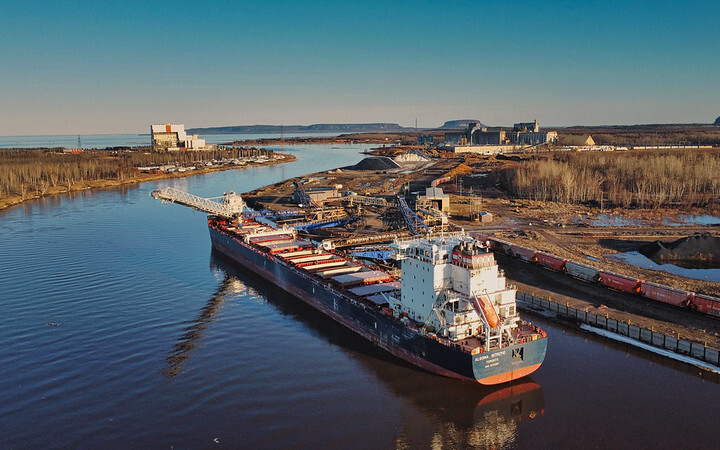Shipping activity for the U.S. Great Lakes in 2023 remained consistent with the previous year through the end of November, with approximately 32.6 million metric tonnes of commodity traffic traveling the seaway system for the year to date.
The total represents an increase of approximately 422,000 tonnes of cargo over the amount transported during the same period last year, according to Ottawa, Ontario, Canada-based Chamber of Marine Commerce.
While there has been year-to-year variation in the traffic of specific commodities, concrete and steel slabs continue to be stand outs with respect to increased year-over-year traffic. More than 1.8 million tonnes of cement transited the corridor, representing an increase of approximately 192,000 tonnes, and more than 354,000 tonnes of steel slabs tonnage has been moved for the year to date, representing an increase of 93,000 tonnes.
Among the ports seeing traffic gains for the year, Duluth-Superior reported a 3.9% increase in total tonnage and a 35% uptick in cement tonnage year over year through Nov. 30. Increases in cement shipments through the Seaway often coincide with regional infrastructure improvements, and the Duluth Seaway Port Authority provided an example of this with completion of a 56,000-sq. ft. warehouse expansion that opened in September. The new structure increased Duluth Cargo Connect’s total warehousing capacity to over 500,000 sq. ft., providing much-needed space to support additional cargo movement for regional manufacturers.
“The amount of cargo traffic on the Great Lakes and St. Lawrence Seaway this year demonstrates the importance of the Seaway as a trade conduit,” Bruce Burrows, president and CEO, Chamber of Marine Commerce, said in a statement announcing the traffic increase. “It also speaks to the professionalism and reliability of those who work on the Seaway, and their partners in marine shipping organizations that use the infrastructure to move what matters in North America. As chamber members like the Port of Duluth-Superior are showing, the marine shipping industry is more than ready to adapt to unforeseen developments and expand to meet the needs of the business community, and that is why our industry will continue driving economic growth throughout North America for years to come.”




